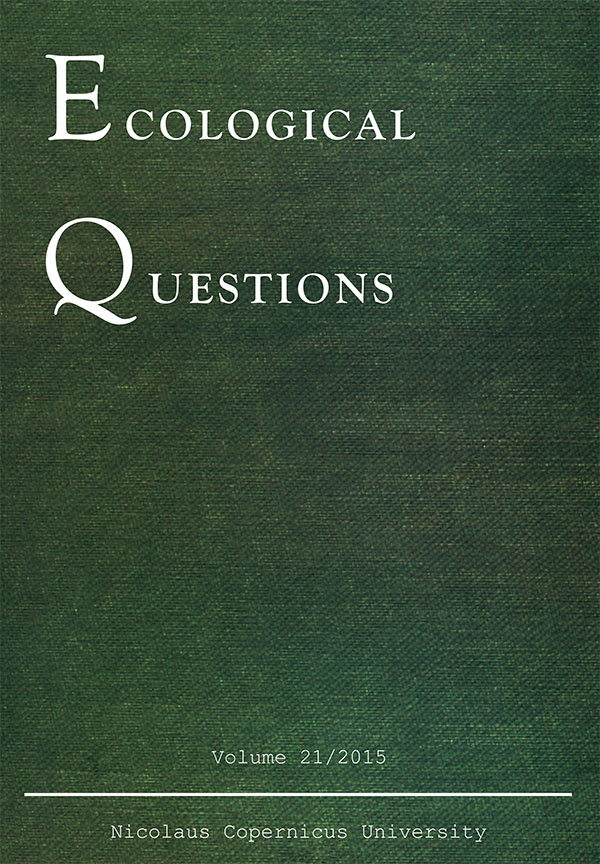What restricts generative rejuvenation of Calluna vulgaris in continental, dry heathland ecosystems: seed production, germination ability or safe site conditions?
DOI:
https://doi.org/10.12775/EQ.2015.004Keywords
disturbance, free-range grazing, germination, management, seedling establishmentAbstract
A large-scale field experiment with different management options (free-range grazing, onetime cutting, additional disturbances and their interactions) was carried out in a continental, dry heathland. Within the framework of the experiment seed production and germination ability of over-aged Calluna individuals as well as specific safe site conditions were investigated to reveal restricting factors for the generative rejuvenation of Calluna. The calculated values of seed production and germination ability of over-aged Calluna individuals can be compared with those from literature or exceed the values reported there. Therefore, seed production and
germination ability are not the limiting factors for the generative rejuvenation of Calluna. Free-range grazing with large herbivores combined with onetime cutting of over-aged Calluna stands supports the generative rejuvenation, especially due to the creation of specific safe sites, which are crucial for a successful survival of Calluna seedlings. Particularly a light shadowing seems to be the restricting factor for a successful generative rejuvenation of Calluna in continental, dry heathlands.
References
Bates D., Maechler M., Bolker B. & Walker S., 2014, lme4: Linear mixed-effects models using Eigen and S4. R package version 1.1–7, URL: http://CRAN.Rproject. org/package=lme4.
Bokdam J. & Gleichman M., 2000, Effects of grazing by free-ranging cattle on vegetation dynamics in a continental north-west European heathland, Journal of Applied Ecology, 37: 415–431.
Cummins R.P. & Miller G.R., 2002, Altitudinal gradients in seed dynamics of Calluna vulgaris in eastern Scotland, Journal of Vegetation Science, 13: 859–866.
Lake S., Bullock J.M. & Hartley S., 2001, Impacts of livestock grazing on lowland heathland in the UK, English Nature Research Reports no 422, Peterborough, UK.
Mitchell R.J., Rose R.J. & Palmer S.C.F., 2008, Restoration of Calluna vulgaris on grass-dominated moorlands: The importance of disturbance, grazing and seeding, Biological Conservation, 141: 2100–2111.
Newton A.C., Stewart G.B., Myers G., Diaz A., Lake S., Bullock J.M. & Pullin, A.S., 2009, Impacts of grazing on lowland heathland in north-west Europe, Biological Conservation, 142: 935–947.
Piessens K., Honnay O. & Hermy M., 2005, The role of fragment area and isolation in the conservation of heathland species, Biological Conservation, 122: 61–69.
Pons T.L., 1989, Dormancy and germination of Calluna vulgaris (L.) Hull and Erica tetralix L. seeds, Acta Oecologica, Oecologia Plantarum, 10: 35–43.
Sedláková I. & Chytrý M., 1999, Regeneration patterns in a Central European dry heathland: effects of burning, sod-cutting and cutting, Plant Ecology, 143: 77–87.
Valbuena L., Tárrega R. & Luis-Calabuig E., 2000, Seed banks of Erica australis and Calluna vulgaris in a heathland subjected to experimental fire, Journal of Vegetation Science, 11: 161–166.
Vera M.L., 1997, Effects of altitude and seed size on germination and seedling survival of heathland plants in north Spain, Plant Ecology, 133: 101–106.
Downloads
Published
How to Cite
Issue
Section
Stats
Number of views and downloads: 1216
Number of citations: 3



